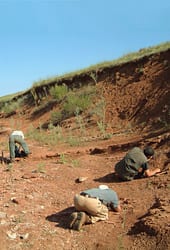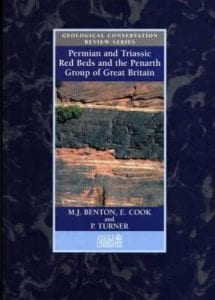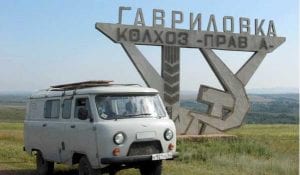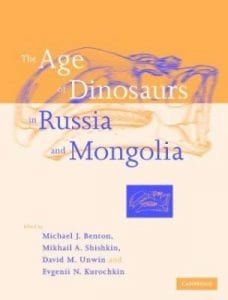Aims and funding
The Bristol-Russia PTB Programme 2004-2010 had the aim of exploring the rich terrestrial successions of redbed sediments in Russia, to document what they recorded through the Permian-Triassic crisis. Through annual fieldwork in the redbeds of Late Permian and Early Triassic age, and analysis of palaeontological, sedimentological, and geochemical data, we sought to understand the environments before, during and after the mass extinction and how the plants and animals were wiped out and then recovered.
The programme was funded initially by the Royal Society (1993-1995, 2003-8), enabling numerous exchange visits between the UK and Russia, with field work funded in Russia and visiting fellowships for early stage researchers and professors from Moscow and Saratov to visit Bristol. Funding was then by National Geographic (2002, 2008) and NERC (2004-2008), which paid for extensive field expeditions, analytical work, and staff.
Key scientific questions
 Most studies of the PTB event had focused on marine sections from many parts of the world. We hopes to determine what happened on land. Our key aims were to find out:
Most studies of the PTB event had focused on marine sections from many parts of the world. We hopes to determine what happened on land. Our key aims were to find out:
- How do the timings and patterns of extinction on land compare with those in the sea? What were the global rates for loss of life on land, and how do these compare with the scale of the marine crisis?
- Were there two events, one earlier in the Late Permian and one at the PTB?
- In each case, were there associated climatic changes (in temperature, CO2 etc.), as indicated by oxygen and carbon isotopes? Do the isotope curves match those from South Africa, and from marine sections, thus implying a truly global scale change?
- What were the local environmental changes as indicated by sedimentology? Is there any change in the distribution and type of paleosols? Is there any evidence for global warming (e.g. aridity, desertification)? Is there any evidence for the proposed massive plant die-off and soil stripping at the beginning of the Triassic?
- How did life on land respond to the two crises? What was the pattern of ecosystem collapse? Is there evidence for ecological or taxonomic selectivity? How does the pattern in Russia compare with South Africa?
- What was the nature and timing of the post-extinction recovery through the Early and Mid Triassic, in terms of rebuilding total diversity and rebuilding ecosystems? How do the Russian data compare to South Africa and the marine realm?
 |
|
 |
 |
 |
Newsletters
Press releases/ Media |


